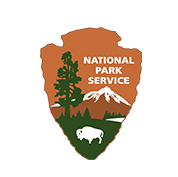Single Publication
Could not determine your location.
2023 - York Fire Burned Area Emergency Response (BAER)
Unit Information
Agency Name: National Park Service

Agency Name: National Park Service

Incident Contacts
How did the York Fire affect cultural resources at MOJA?
2023 - York Fire Burned Area Emergency Response (BAER)
Publication Type: News 08/18/2023
Some impacts of wildfire on cultural resources are obvious, like the loss of historic structures that burn completely. Potential, unseen impacts can include long-term risks like flooding and destabilization.
As firefighters gained containment of the York Fire, Mojave National Preserve archaeologists Dave Nichols and Danilo Giordano went into the field for a post-fire assessment. They visited the cultural sites within the fire perimeter to evaluate fire-related damage. They documented their observations and concerns for the Burned Area Emergency Response (BAER) team.
In previous wildfires, like the Dome Fire, partially damaged resources were addressed by BAER teams and rehabilitated using Burned Area Rehabilitation (BAR) funding. Structures that are partially charred are destabilized, which puts the rest of the structure at risk of collapse. Staff evaluate these situations to propose certain structures as candidates for stabilization in the BAER plan. The York Fire’s burn pattern was unique in that structures and artifacts were either destroyed or unaffected, so no cultural resources from the preserve were included in the BAER treatment plan.
Evidence of historic practices like ranching and mining is often lost in a fire. Structures like barns, corrals, and mine shafts are usually built of flammable materials like wood, which catches fire easily and burns quickly. Some of the most prominent losses from the York Fire were a homestead, a rare wooden cattle scale, and historic grazing pastures. Some unique railroad structures were also lost, like wooden culverts that supported historic railroad lines.
The York Fire also spared some of the preserve’s irreplaceable cultural resources. OX Ranch and the red house at Barnwell, which is the original headquarters of the Rock Springs Land and Cattle Company, miraculously survived. The fire moved swiftly through open-air prehistoric sites where artifacts like ceramic pottery sherds and stone projectile points are scattered, resulting in little damage. The fire reached some prehistoric rock art sites, where the lack of surrounding vegetation caused it to move quickly across these areas, leaving the art intact. The Slaughterhouse Spring and Vanderbuilt Cemeteries, both of which have unique wooden components, were luckily untouched by the fire.
Staff like Dave and Danilo spend years documenting data on historic structures, gathering historic accounts, adding structures to the National Register of Historic Places, and preserving historic structures. The preserve loses more of this work with each wildfire. As climate change causes desert wildfires to become increasingly frequent and severe, land managers consider new approaches to prepare public lands. Preserve staff clear vegetation around flammable historic structures to reduce the fuels that carry fire. Structures can also be wrapped in fire-resistant foil when a fire approaches, which may reduce the impact of heat and flames.
Please enjoy historic structures from a safe distance, especially after a fire. Fire can destabilize structures like mines and cabins, making them vulnerable to collapse and posing a safety hazard to visitors. Cultural artifacts can’t be replaced once they’re lost.

 InciWeb
InciWeb